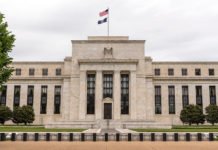Markets
With Japanese, UK and US markets still closed, EMU markets took a constructive start to the new year. Last week, the post-ECB bond sell-off propelled German yields to close 2022 at cycle peak levels across all maturities. The 10-y testing/briefly surpassing the psychological barrier of 2.50% apparently was a good enough reason for investors to take a more cautious approach awaiting key data evidence in the US (ISMs, payrolls, Fed Minutes) and EMU (CPI) later this week. The Dutch (February) gas contract dropping below levels last seen before the start of the Ukraine war, raised hope that the negative supply shock of exceptionally high energy prices might gradually turn less aggressive. The EMU December CPI estimate on Friday serves as a first reality check. Admittedly, oil keeps a modest upward path ($85.9 p/b). Even so, the German curve bull flattened with yields easing between 5.5 bps (2-y) and 14.5 bps (30-y). Contrary to what often happened of late, the bond rally this time was mainly driven by a decline in inflation expectations rather recessionary fears. This supported European equities with most major indices gaining 1.0%+ (EuroStoxx50 +1.65%). With other major markets still closed, moves in the major FX cross rates stayed modest, despite the repositioning on the EMU yield markets. After opening near 1.07, EUR/USD closed modestly lower at 1.0667. EUR/GBP held near the 0.8867/77 resistance/recent top, but we await the reopening of UK markets today to drawn any conclusions on sterling momentum.
This morning, Asian markets are starting the day mixed. Hong Kong gains about 1.65%. The CSI 300 only shows a marginal gain as the China Caixin manufacturing PMI dropped further below the 50 mark (to 49.4), confirming even more negative readings in the official PMI’s published on Saturday. The Australian S&P/ASX 200 cedes 1.31%. The yen still outperforms. USD/JPY (129.75) dropped below the 130.58/41 key support area (Japanese market is still closed). EUR/USD (1.067) trades little changed. Treasury futures also suggest a correction in US yields at the open.
Today, we look out whether US (and UK) markets will join yesterday’s positive start in Europe, but the reopening comes amid an almost empty UK and US calendar. In Europe, preliminary German December inflation data are expected to confirm the gradual easing that started last month, with the HICP expected at -0.8% M/M bringing the y/y measure to 10.2% (from 11.3%). French HICP shows somewhat of a different dynamic and is expected to rise 0.4% M/M and 7.3% Y/Y (from 7.1%). With the ECB keeping a close eye on the risk of potential second round effects/wage inflation, German labour market data also deserve some attention. In a day-to-day perspective, we see room for the correction in EMU/German yields to go still somewhat further even as the ECB probably gives more weight to (still stubbornly high) core inflation rather than to an energy-driven decline in the headline. EUR/USD recently held a tight range just below the 1.0735 post-ECB peak. A break/ further USD losses, probably need soft US data (ISM’s tomorrow/Friday; payrolls on Friday).
News Headlines
A CoreLogic report showed that Australian house prices dropped by 1.1% in December, taking values 5.3% lower over the 2022 calendar year. The re-acceleration in the downtrend was driven by a worsening in the monthly decline rate across Melbourne, Sydney, Adelaide, Darwin and Canberra. The yearly price drop was the first one since 2018 and the largest one since 2008 (6.4% fall). Prices are now 8.2% lower than the peak in early May. CoreLogic’s research director Lawless pointed to the RBA’s record-breaking tightening pace as the key reason for the cooling housing market. The central bank lifted policy rates by 300 bps from May through December with more to come.












